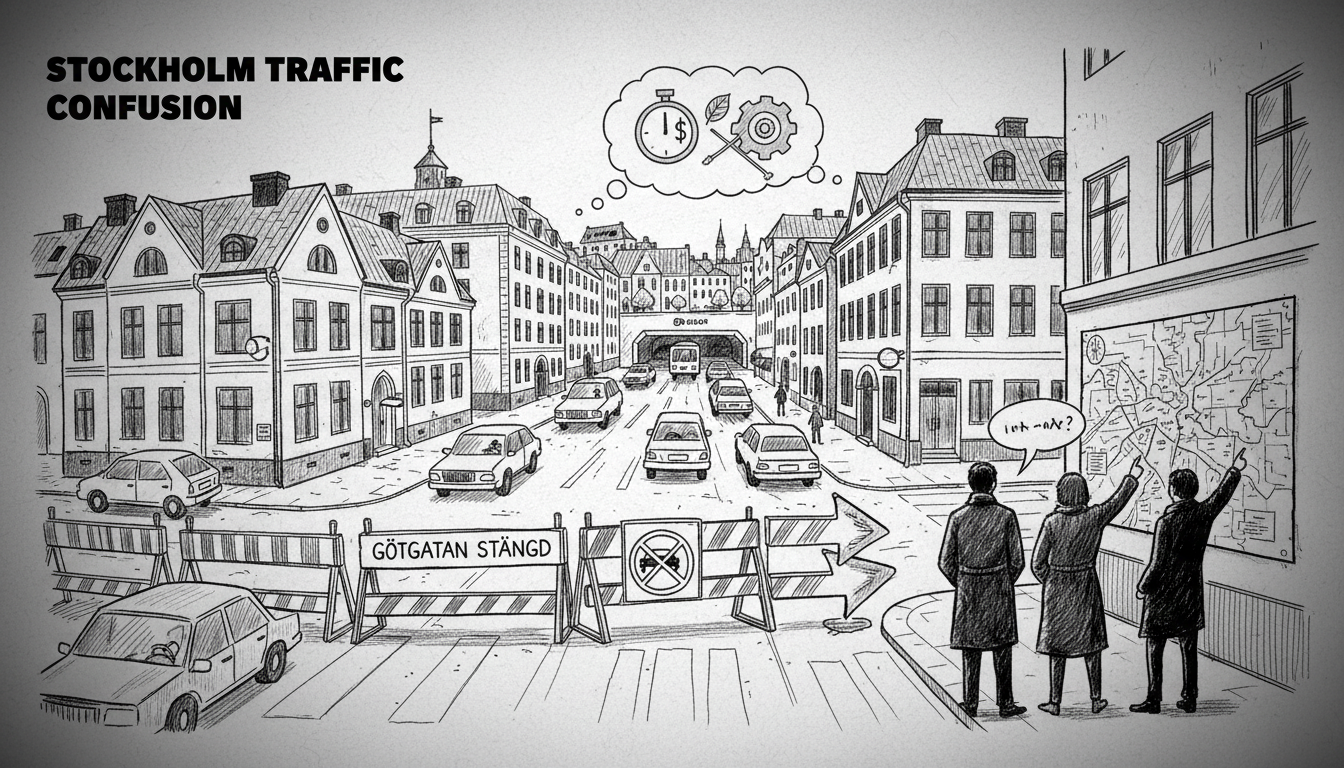The sudden closure of Götgatan street has left drivers frustrated and confused in Stockholm's trendy Södermalm district. Traffic guards stationed at the barrier near Kockgatan and Åsögatan struggle to redirect motorists who miss the detour signs. Many drivers attempt dangerous maneuvers, including driving onto bicycle lanes to bypass the blockade.
One traffic guard expressed the challenge of managing the situation. I try to stop them, but I cannot always react quickly enough. They simply drive onto the bike lane and continue that way, the guard explained while pointing to where cars had attempted to circumvent the barrier.
The closure stems from necessary subway tunnel renovations that require this traffic stoppage. While all political parties agree the maintenance is essential, Stockholm's opposition Moderate Party wants the city to reopen other closed routes. They specifically point to the Söderleden tunnel, where concrete barriers permanently block certain access points.
Dennis Wedin of the Moderate Party argues for restoring access. Open the Söderleden tunnel so people can actually leave Södermalm more easily, the opposition councilor said in a statement.
However, city officials defend the current traffic planning. They emphasize that the concrete barriers in Söderleden tunnel actually improve public transportation efficiency. Particularly suburban bus traffic flows smoothly, even during rush hours, thanks to these barriers, according to transportation officials.
Lars Strömgren, the city's traffic councilor from the Green Party, offered perspective on Stockholm's transportation future. There is a place for cars, even in Stockholm's future. But especially those who need cars benefit when as many people as possible use public transport, cycle, and walk, Strömgren noted.
This situation reflects Stockholm's ongoing balancing act between necessary infrastructure maintenance and daily mobility needs. The city continues its transition toward prioritizing sustainable transportation while acknowledging that cars remain part of the urban landscape. The Götgatan closure highlights how even temporary disruptions can reveal deeper tensions in urban planning and transportation policy.
For international readers, this demonstrates Sweden's practical approach to urban development. The country consistently invests in long-term infrastructure while managing short-term inconveniences. Stockholm's distinctive neighborhood character adds complexity to these transportation decisions, with areas like Södermalm featuring narrow streets that challenge both drivers and urban planners.
The current situation shows how Swedish cities navigate the competing demands of immediate traffic flow and long-term sustainable development. As Stockholm continues growing, these balancing acts between different transportation modes will likely become even more central to urban policy discussions.

